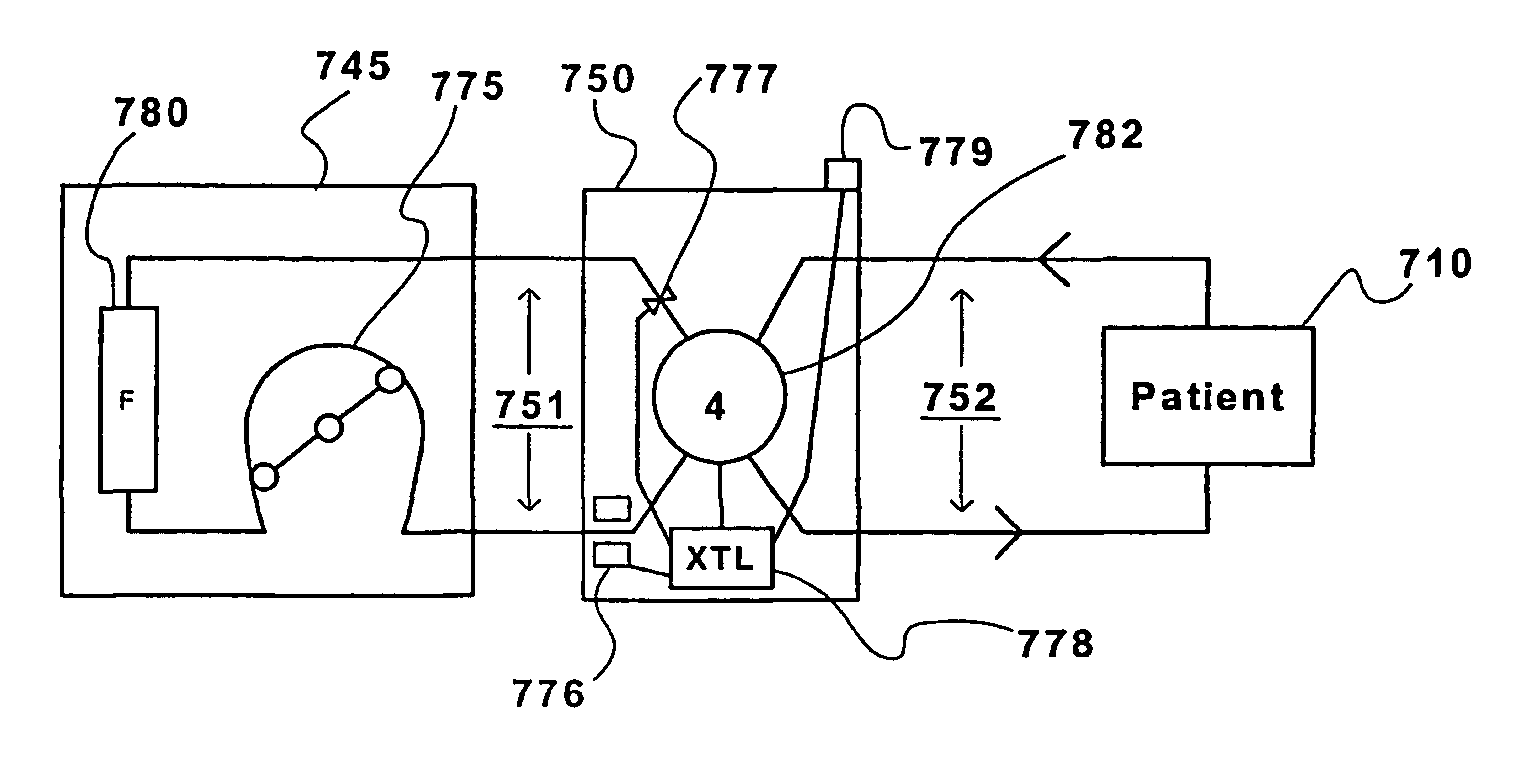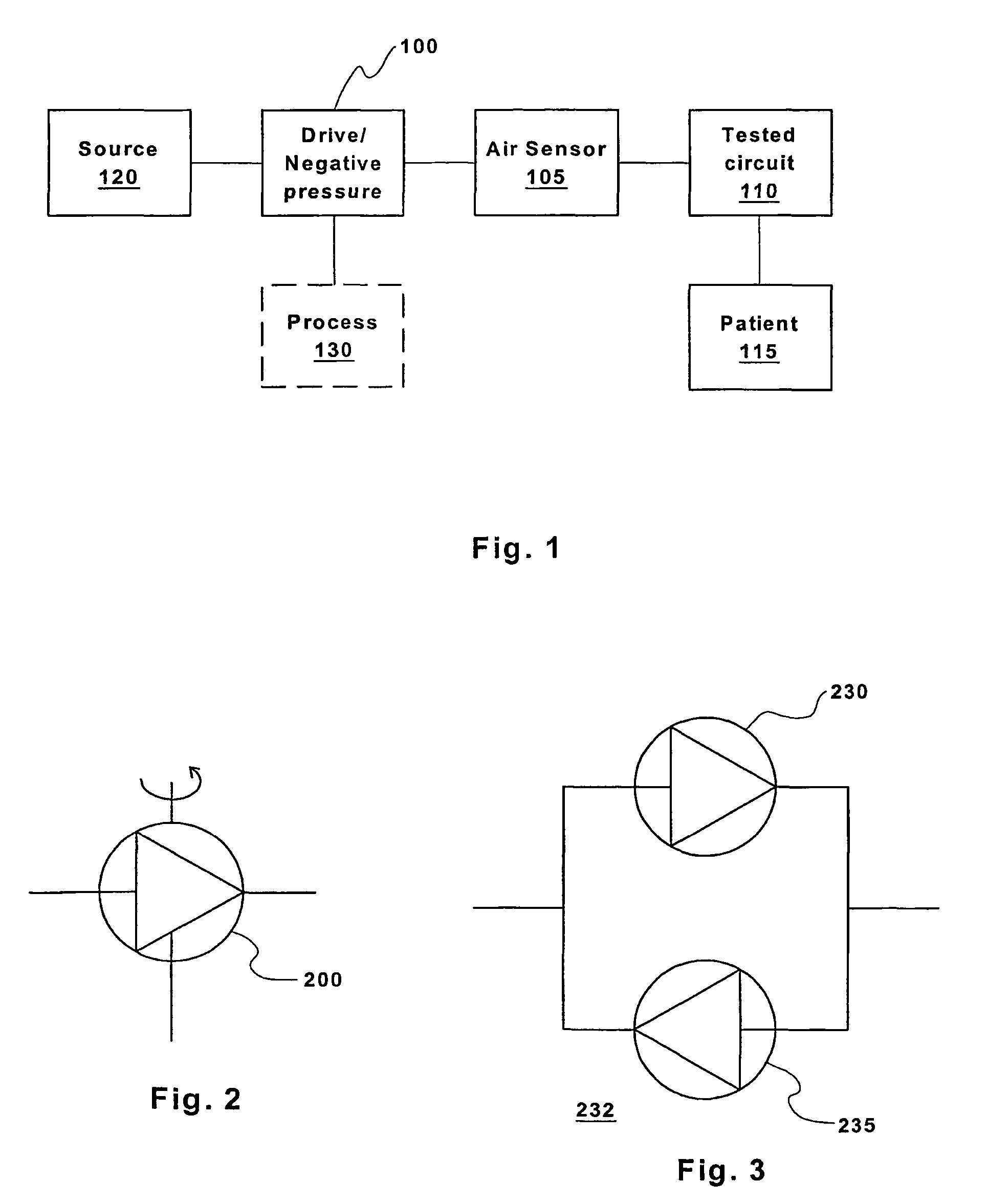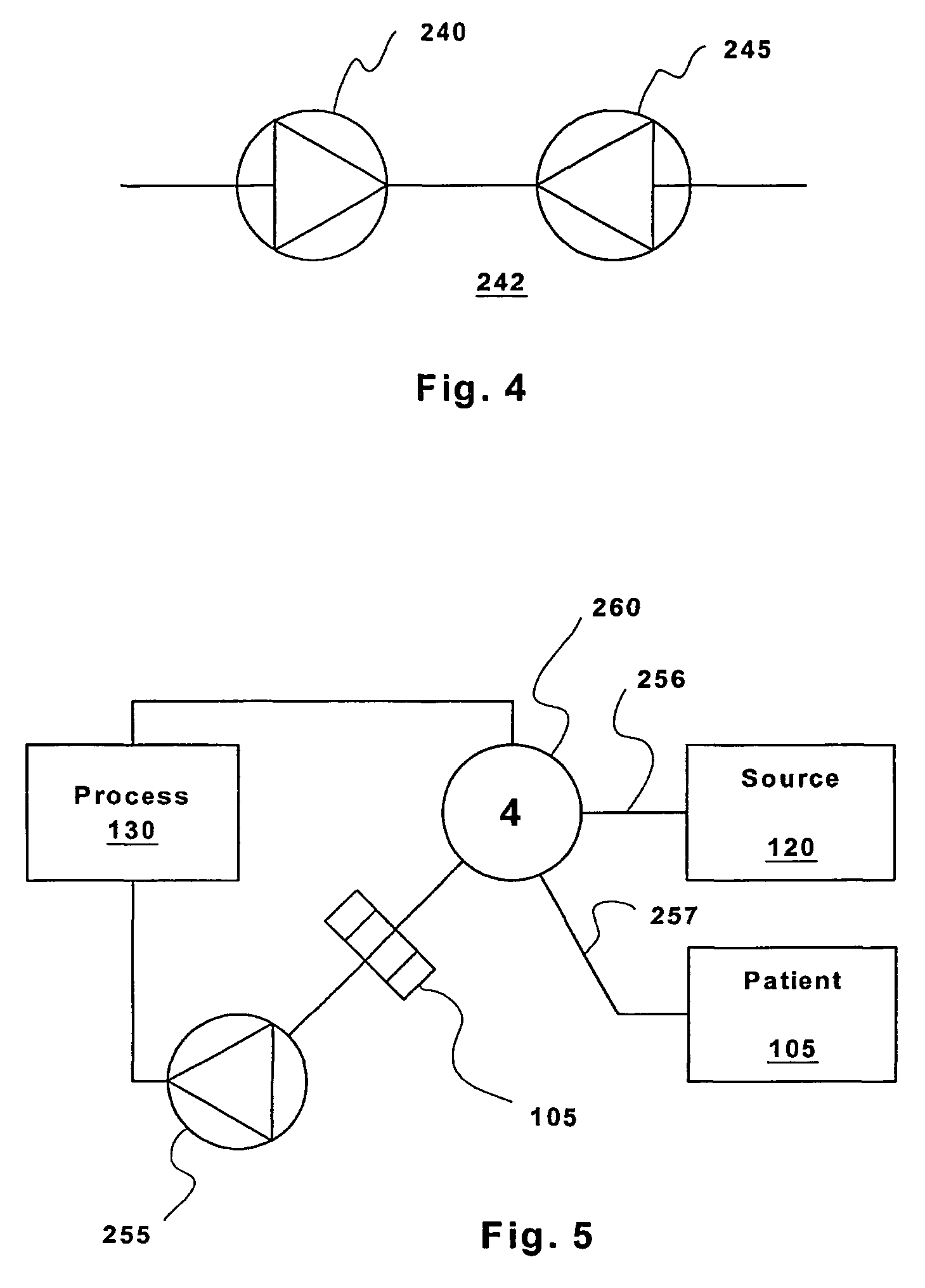Method and apparatus for leak detection in a fluid line
a fluid line and leak detection technology, applied in the field of leak detection, can solve the problems of detectable air infiltration air to infiltrate through any opening in the circuit,
- Summary
- Abstract
- Description
- Claims
- Application Information
AI Technical Summary
Benefits of technology
Problems solved by technology
Method used
Image
Examples
Embodiment Construction
[0052]Referring to FIG. 1, elements of an embodiment of the invention are illustrated schematically. A source of fluid 120 (for example blood) supplies fluid to a drive / negative pressure device 100 that does at least two things: it moves the fluid to the patient and it selectively generates negative pressure. It may also incorporate, or be connected with, a treatment process 130, for example a hemofiltration, hemodialysis, hemodiafiltration, or other blood treatment process. A fluid circuit connects the drive / negative pressure device 100 to an air sensor 105, which is in turn connected to a tested fluid circuit 110 whose leak-integrity must be assured. Finally, fluid is introduced into a patient 115. Note that in some embodiments, the drive / negative pressure device 100 may be transposed with the air sensor 105, as long as it is assured that any leaks in the tested circuit 110 will arrive at at least one air sensor. Air sensors may be arranged in the tested circuit as well.
[0053]The ...
PUM
 Login to View More
Login to View More Abstract
Description
Claims
Application Information
 Login to View More
Login to View More - R&D
- Intellectual Property
- Life Sciences
- Materials
- Tech Scout
- Unparalleled Data Quality
- Higher Quality Content
- 60% Fewer Hallucinations
Browse by: Latest US Patents, China's latest patents, Technical Efficacy Thesaurus, Application Domain, Technology Topic, Popular Technical Reports.
© 2025 PatSnap. All rights reserved.Legal|Privacy policy|Modern Slavery Act Transparency Statement|Sitemap|About US| Contact US: help@patsnap.com



